The flora, and obviously the fauna, which has colonized the circum-Mediterranean territory, has had to face a very particular situation: rainfall concentrated only in a few months, with consequent long dry periods and a long annual photoperiod. These characteristics lead to consider the Mediterranean climate as subtropical. In fact, the typical Mediterranean vegetation is a Subtropical Sclerophyll Forest.
Climate change is causing a radicalization of these phenomena. The increasingly concentrated rainfall in very short periods is the cause of hydrogeological instability and the increasingly long drought periods put a strain on the agricultural economy.
Looking closely at the adaptations that characterize the flora of the coasts and the immediate hinterland of the Mediterranean, we realize that precisely these characteristics could help us to better resist the problems posed by climate change.
First of all, we will notice how many species belonging to different families have adopted the same tricks; this highlights an adaptive convergence that explains the “resemblance” between the leaves of phylogenetically very distant plants.
We begin our brief “analysis” by first focusing on two words that identify Mediterranean species: evergreen and sclerophyllous.
Being evergreen, i.e. not having periods in which the plant is leafless, both in the case of trees and shrubs, is a characteristic that has been able to develop thanks to the fact that it almost never freezes on the coasts of the Mediterranean basin.
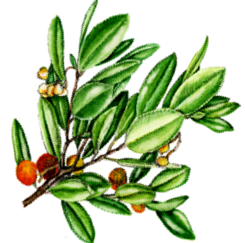
Sclerofillia is a word that derives from the Greek scleròs = hard and phyllon = leaf. It is a very important adaptation that most Mediterranean plants had to adopt to live and reproduce in this climate.
The hardness of the leaves is due to the thickening of the leaf cuticle which limits transpiration and therefore the loss of water. It is an adaptation that has become indispensable above all for the species most exposed to the sun, wind, and brackish water.
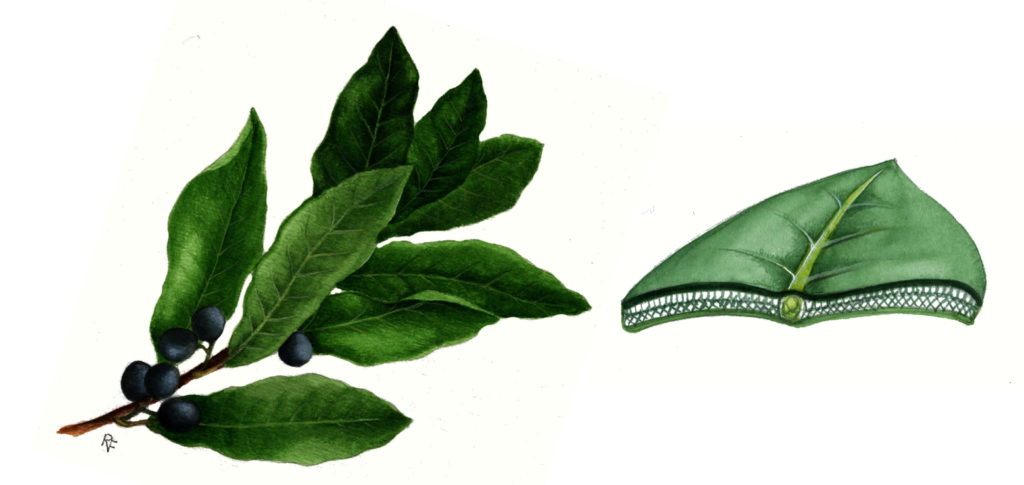
Reducing the size of the leaf lamina is a strategy adopted both by plants that must limit water losses such as junipers, rushes, or sweet broom, and by plants such as conifers which, by colonizing the mountain plains, must avoid freezing. Thus the needle-like leaf common to all pines is useful to them both on the coasts (maritime, domestic, Aleppo pine) and in mountainous areas (black pine, mountain pine).
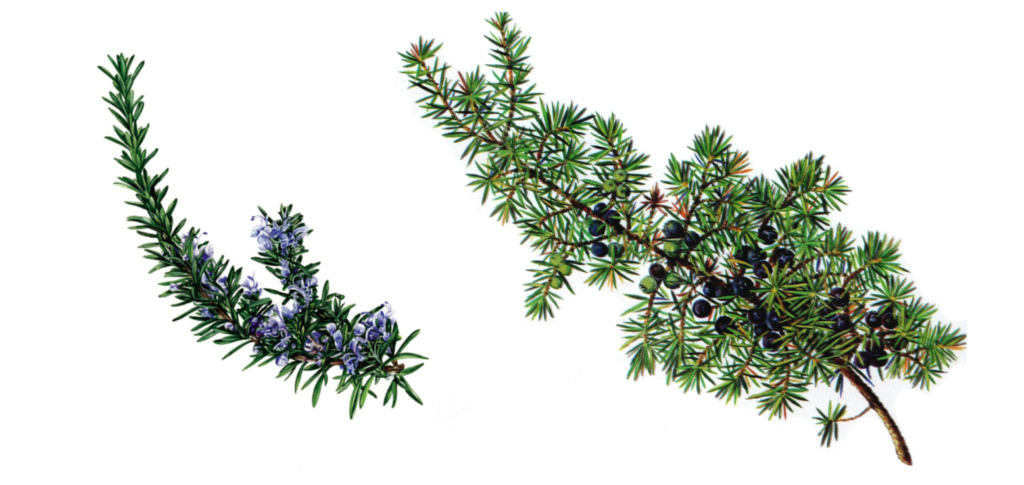
Most of the species most exposed to direct sunlight, which make up the so-called “low maquis”, which cannot count on any form of shade, to reduce water loss and as a deterrent against grazing, release aromatic essential oils.
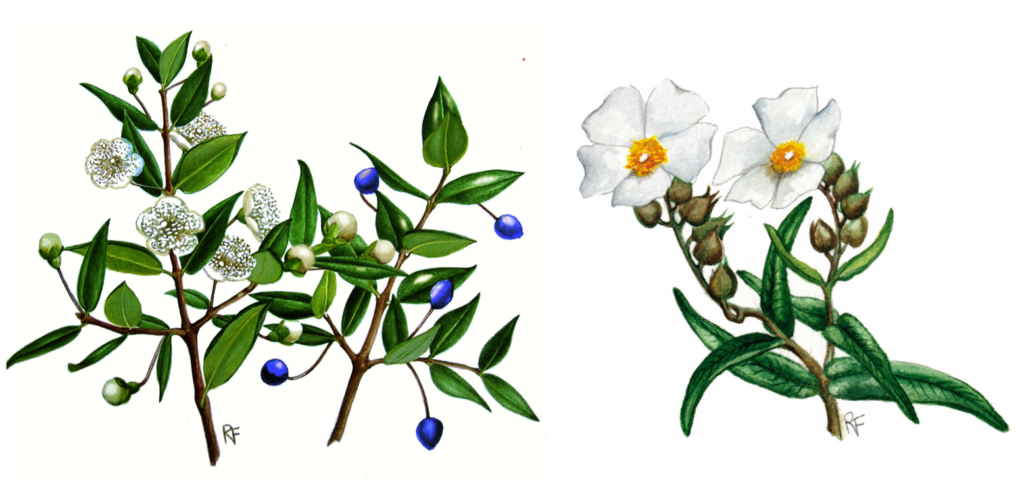
Then there are plants such as the Holm oak and the Olive tree which have added other adaptive strategies to the sclerophyll. Observing their leaf we notice that the upper page is shiny and the lower one is tomentose, that is, it has very thick and short hair.
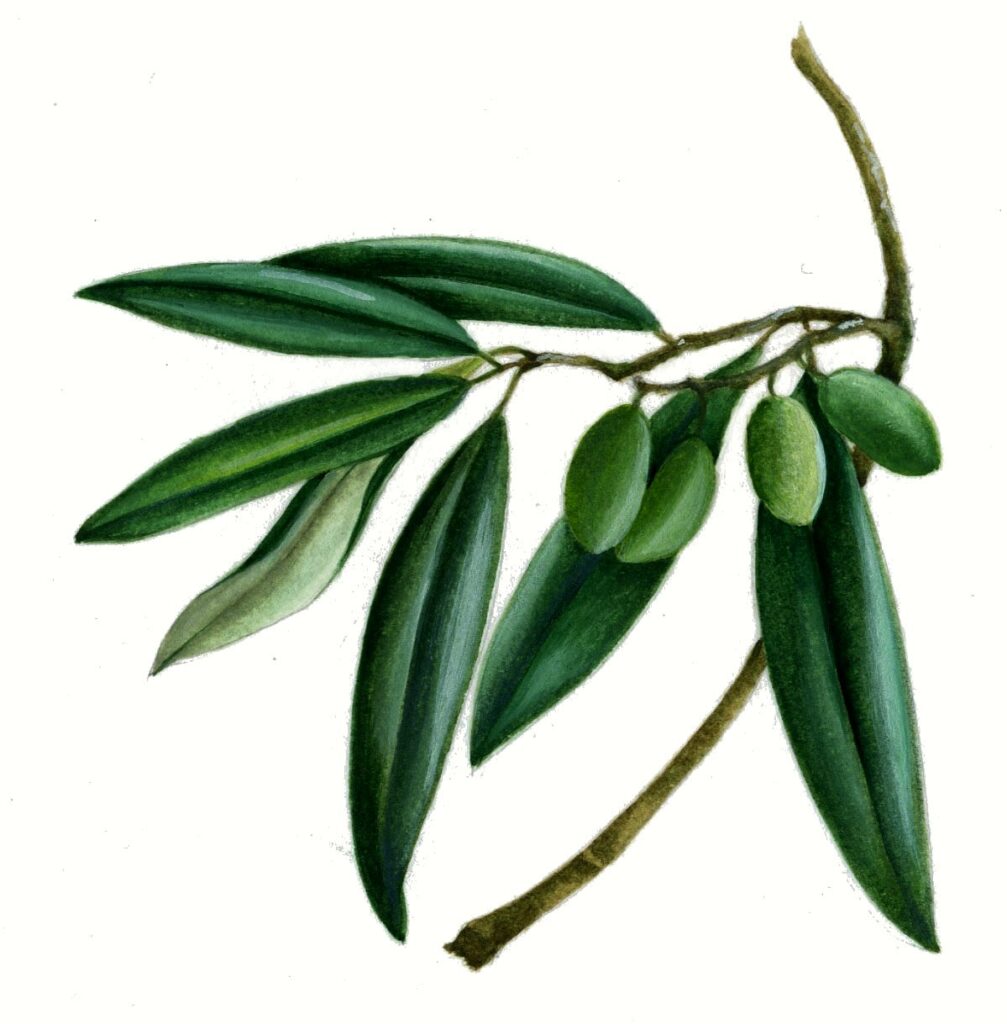
In many cases, as for the Santolina of the beaches, the tomento is present on the whole plant, just like in the Edelweiss: both these plants shelter their water reserves from atmospheric agents: in the Santolina to preserve them, in the Edelweiss so they don’t freeze. Opposite climatic stresses have determined an identical adaptation.
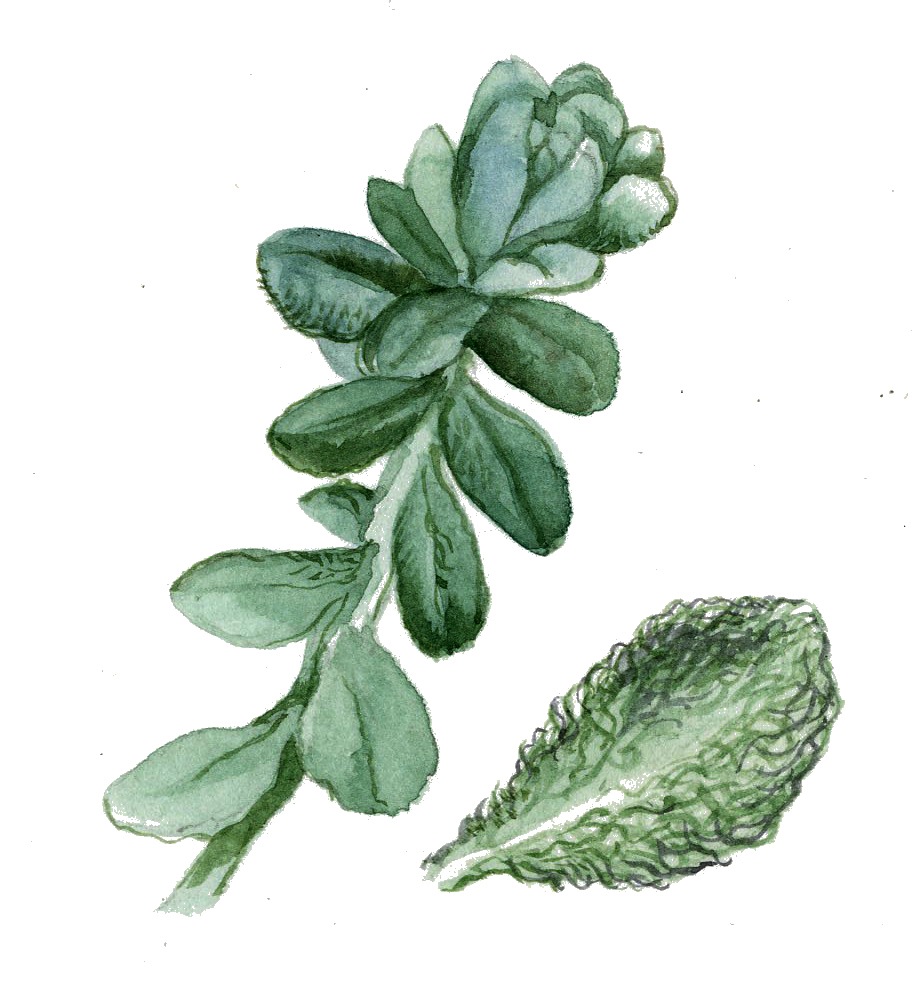
Where the lack of water is particularly strong, such as on beaches or on rocks (places comparable to deserts) plants adopt two types of strategies, the same adopted by desert plants: they transform their leaves into thorns and store large quantities of water in the stem or leaves, making them succulent. That is, they transform their cells into authentic water deposits, which they then defend against perspiration by means of a drastic reduction in the stomata (vegetable equivalents of the pores of our skin).
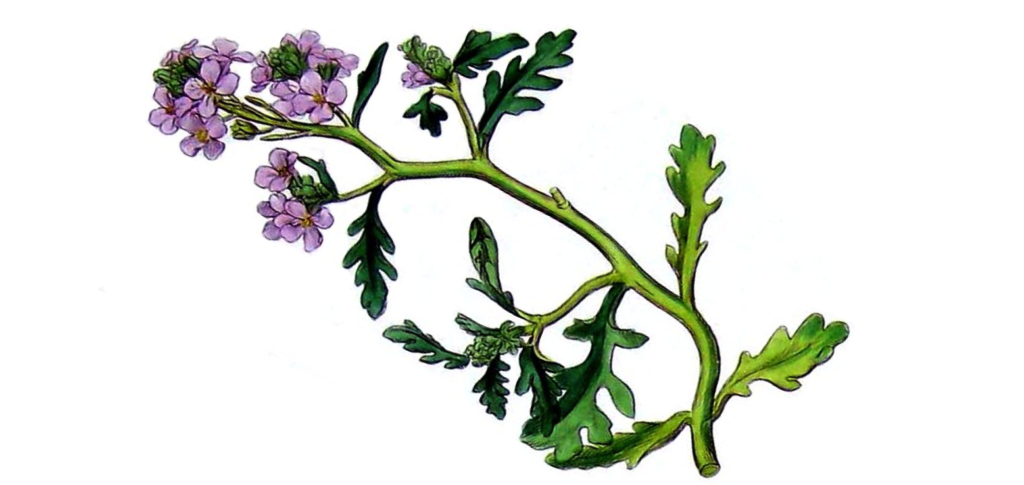
Then there is a very common feature in the Mediterranean plant species; it is heterophyllia, which is the ability to develop leaves of different shapes and sizes even on the same branch. Examples of the presence of leaves of different shapes in the same plant, depending on the height from the ground at which they are located, are the Ivy and the Holm oak. In the first case, there is diversity of shape, and in the second of size. If you observe the shape of the Ivy leaves placed on the branches that run along the ground, you will notice their classic starry shape, which is lost in favor of a more rounded one, as the plant, climbing, reaches the more “stations” tall and bright.
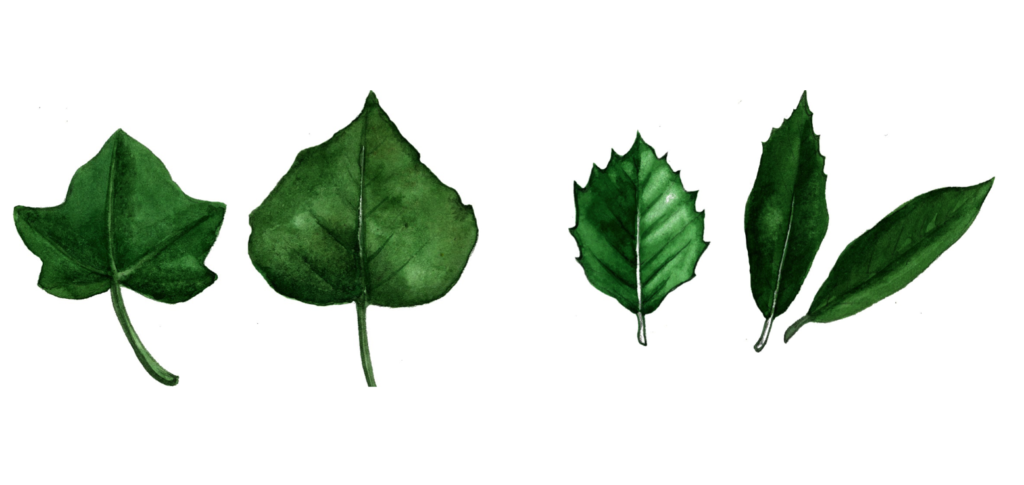
In the case of the Holm oak, the lower and less exposed to direct light leaves (the Holm oak maquis is very dense), have a lamina that is even four times larger than that of the leaves of the highest branches. Furthermore, the leaves placed closer to the ground also have a characteristic “thorniness” of the edge, due to a highlighting of the toothing of the margin which is completely lost on the higher leaves, which are not afraid of grazing!
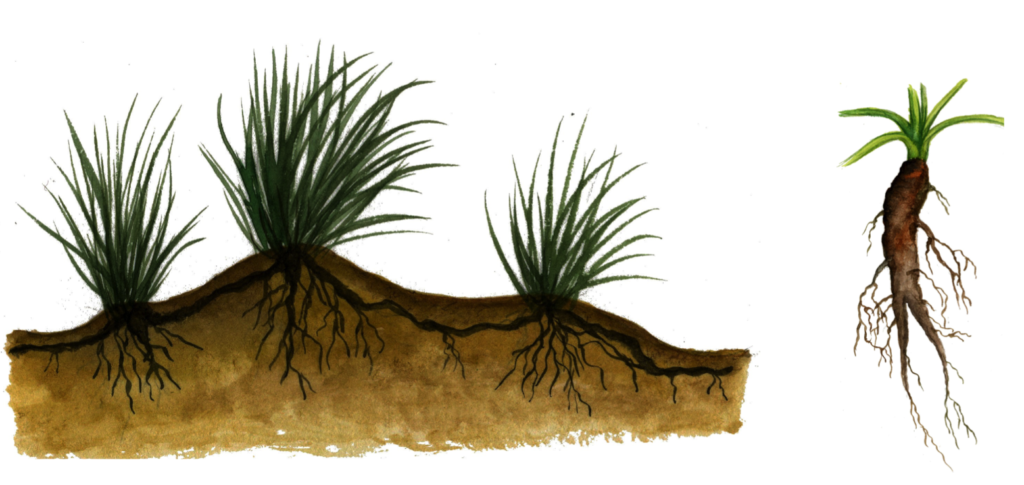
In particularly dry areas, even the root systems have a series of adaptations that increase the ability to absorb water; thus the root system of Ammofila, a pioneer plant of sandy coasts, forms a very extensive network, which allows this species to collect the rain that filters rapidly through the sand.
Many other plants, such as those belonging to the Daucum and Echinophora genera, instead use the roots as a nutrient reserve.
Plants such as the Euphorbia dendroides (also known as tree spurge), which are capable of forming pure or mixed populations in the warmer horizon of the maquis on the coastal rocks exposed to the sea winds and to very intense insolation, have found it convenient to reverse the rest period with the vegetative one.
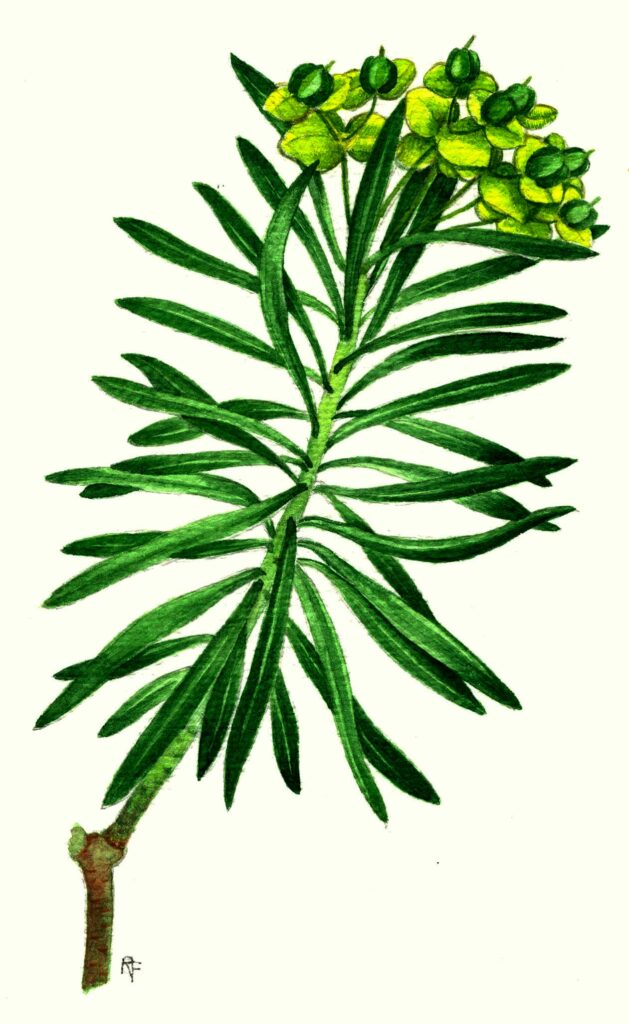
After spring flowering, the Euphorbia loses its leaves and enters quiescence; only in autumn, while the trees of the hinterland, which have to worry about the frost, lose their leaves and, taking advantage of the autumn rains, turns green!
Author: Anna Lacci is a scientific popularizer and expert in environmental education and sustainability and in territory teaching. She is the author of documentaries and naturalistic books, notebooks and interdisciplinary teaching aids, and multimedia information materials.
Translation by Maria Antonietta Sessa



